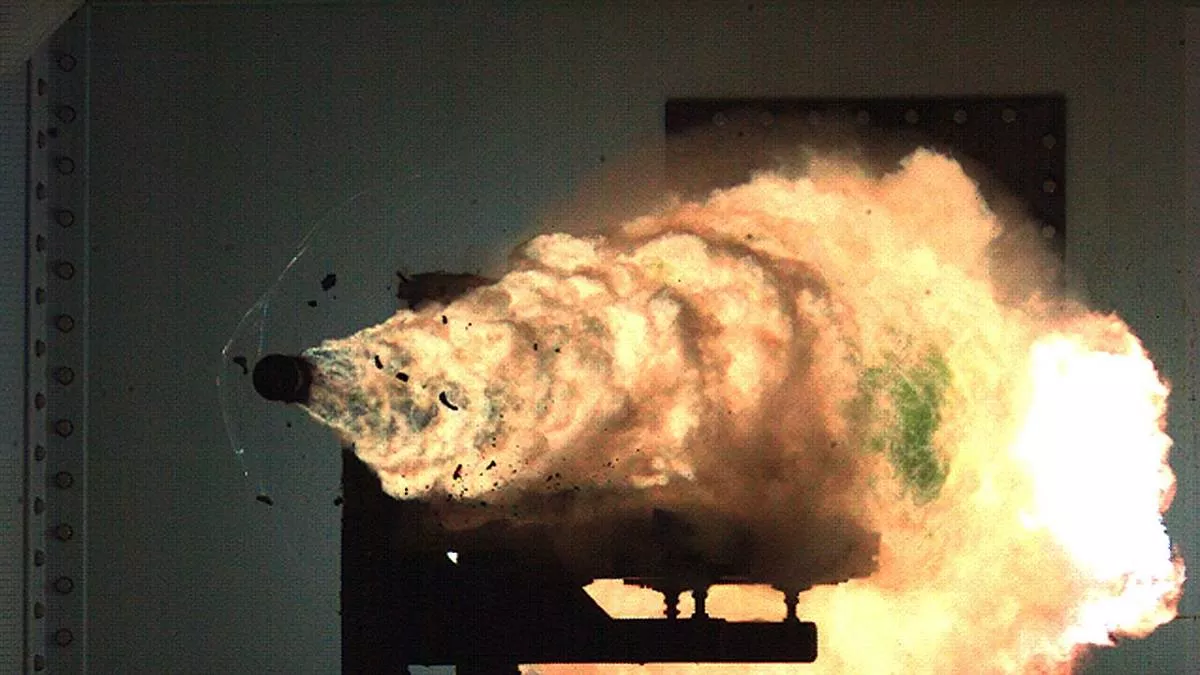Railgun: A Super Weapon That No One Uses In War (Thankfully)

From bombs to missiles, there are certain weapons that hold a terrifying potential for destruction. One such weapon is the railgun which is extremely powerful but still not used on the battlefield.
A railgun is a special kind of weapon that can shoot a giant bullet at great speeds. It employs the principles of electromagnetism to achieve this goal. Also, it doesn’t contain any explosive warhead, meaning its damaging effect is solely based on the impact of the bullet. Despite its ability, it isn’t a practical option during armed conflicts, thanks to some major caveats.
Before we dive into why no country is ready to unleash this weapon’s wrath, let’s learn about how it works. The primary mechanism of a railgun consists of a pair of parallel metal rails, a rotating coil, and a projectile or bullet.
When an electric current travels through the structure, it first runs through a metal rail, then moves to the coil, and finally reaches the second rail. This creates electromagnetic forces strong enough to accelerate the projectile and prepare it for launch.
Since a railgun is powered by electromagnetism, it’s different from the conventional gun which is powered by chemical explosives. However, while explosive-powered guns can only reach an initial speed of 2 km per second, railgun can go as fast as over 3 km per second as soon as it launches.
The forces inside a railgun are so powerful that it enables the projectile to reach the maximum speed of almost 16K meter per hour. Moreover, a railgun can also hit significantly far targets with its impressive range that goes up to 185 km. In other words, this weapon, while stationed in a particular city, can easily strike neighboring cities remotely.
Why are railguns not used in war?
Although railguns pack a lot of power, the military doesn’t deploy them in real wars for a few solid reasons. First of all, these war machines produce a great amount of heat which could create unfavorable circumstances on the battlefield. Additionally, they also require a large space to function which isn’t very efficient during a war.
Other more technical aspects that pose a challenge to the mainstream use of railguns are their durability and the lack of accuracy at distance. As per the demonstrations till now, a railgun can’t shoot multiple projectiles of the same power on the bounce. For it to be feasible and efficient in its application, the same railgun must be able to fire hundreds of equivalent rounds.
Moving on, railguns must have an assured level of accuracy to be reliable for real-life use cases. Currently, there is no guidance mechanism that meets the various restrictions for use in railgun projectiles. This means that even if the weapon makes it into battle, there is a considerable chance of the bullet missing the target.
As we speak, military researchers are working on improving railguns to make them battle-ready. Sooner than later, we could learn about the railgun coming to the forefront of warfare. In fact, sources reveal that China has progressed significantly in this respect and has already conducted tests of its own railguns.






